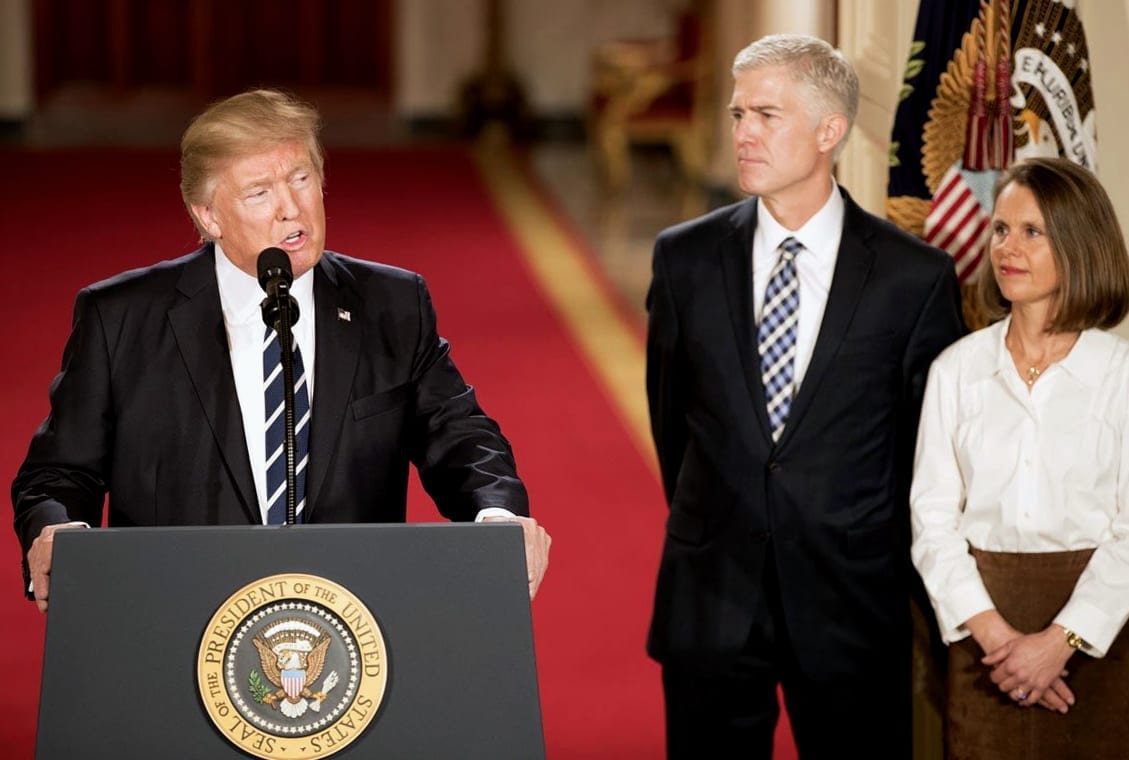President Donald Trump’s pick for the Supreme Court, Neil Gorsuch, was confirmed Friday after the Senate went nuclear.
The successful appointment marked what must have been a refreshing victory for the fledging administration, which has so far been frustrated by the judiciary at almost every turn. Gorsuch joined the Supreme Court on Monday as the late Antonin Scalia’s successor, both in practice and ideology. Given his age and the lifelong term for justices and Gorsuch could be playing his part in the nation’s highest court for decades to come.
“As a deep believer in the rule of law, Judge Gorsuch will serve the American people with distinction as he continues to faithfully and vigorously defend our Constitution,” Donald Trump said on Friday.
Gorsuch is considered a Constitutional “orginalist,” meaning he prefers to interpret the document based on the intent of its framers. His self-proclaimed adherence to the originalist philosophy espoused by Scalia has been scrutinized by legal professionals and supported by others.
The latest addition to the Supreme Court was confirmed by a 54-45 vote in his favor.
Traditionally, the Senate has required a super-majority of 60 votes to confirm nominees to the Supreme Court. Senate Majority Leader Mitch McConnell (R-KY) threatened last week to use a “nuclear option” to ensure Gorsuch’s appointment if Democrats were not willing to oblige the GOP. After failing to gather the necessary support, McConnell and Senate Republicans forced through a vote which would allow Gorsuch and all future Supreme Court nominees to be confirmed by a simple majority.

The decision was criticized harshly by leading Democrats such as Chuck Schumer, as well as a number of Senate Republicans. In addition to changing a two-hundred year old senatorial tradition, there are fears that confirmations based on a simple majority vote could lead to Supreme Court justices being selected based more on political views and ideology than competence.
McConnell and Senate Republicans said the use of the so-called nuclear option was necessary, given a Democrat-led filibuster against a SCOTUS candidate who seemed conservative but competent on paper. Little mention was made of the GOP’s refusal to even give a hearing to Judge Merrick Garland, who was Barack Obama’s pick for the late Scalia’s seat. McConnell and his colleagues were firm in saying that the choice belonged to the “next president,” regardless of the fact that Obama still had months left in office.
Gorsuch is a graduate of Columbia University, Harvard, and Oxford. The New York Times reports that he served as a Supreme Court law clerk “and worked as a lawyer at a prestigious Washington law firm and at the Justice Department.” In 2006, he joined the U.S. Court of Appeals for the 10th Circuit, in Denver, where “he was widely admired as a fine judicial analyst.
Some of Gorsuch’s past decisions remain controversial. Among the most widely panned was his dissent in the case of “frozen trucker” Alphonse Maddin, who was terminated by his employer for seeking shelter after his trailer’s brakes locked and his heater stopped working.
Judge Gorsuch was sworn in during two separate ceremonies – a private one at the Supreme Court and another at the White House.
Sources
Democrats have zero leverage after Gorsuch
Gorsuch is the face of the new not-normal
Neil Gorsuch Confirmed by Senate as New Supreme Court Justice
Opinion The myth that is Neil Gorsuch’s ‘originalism’
Senate Republicans Deploy ‘Nuclear Option’ to Clear Path for Gorsuch


Join the conversation!